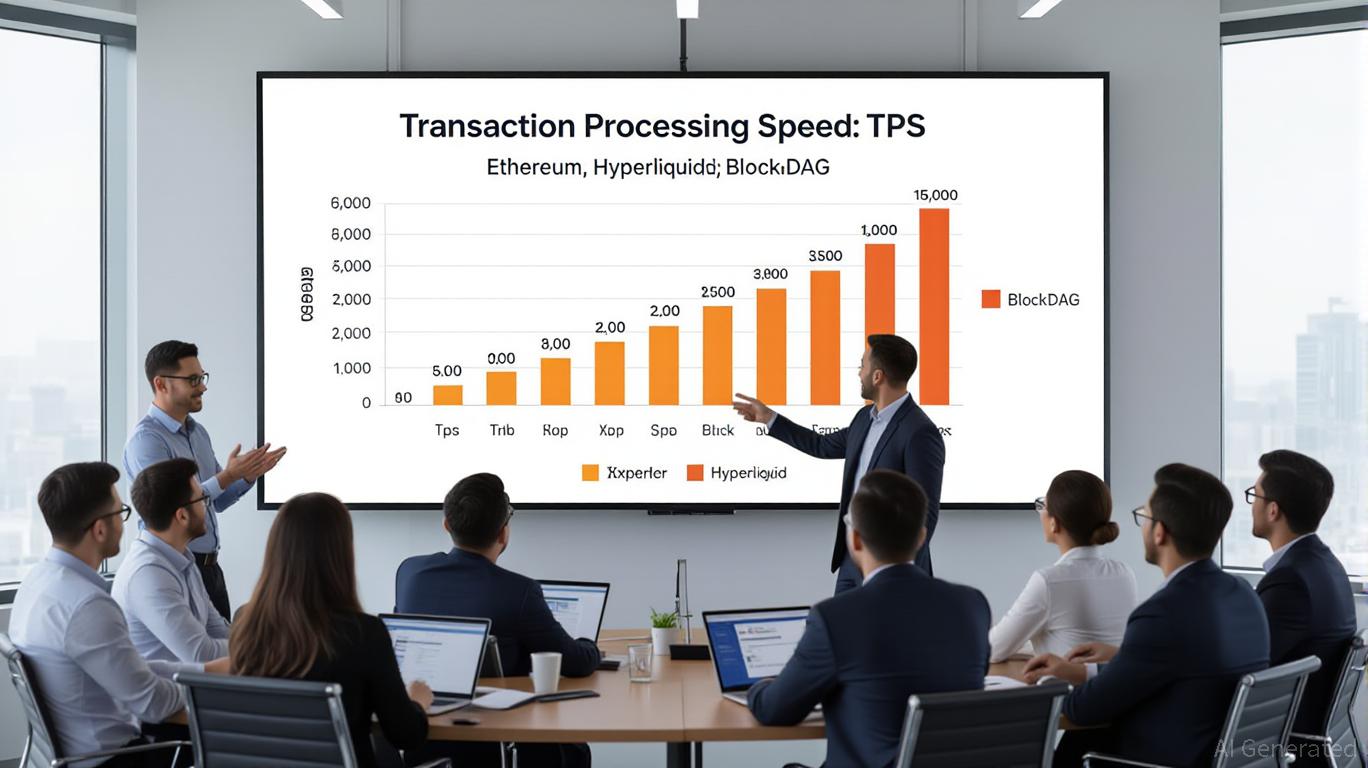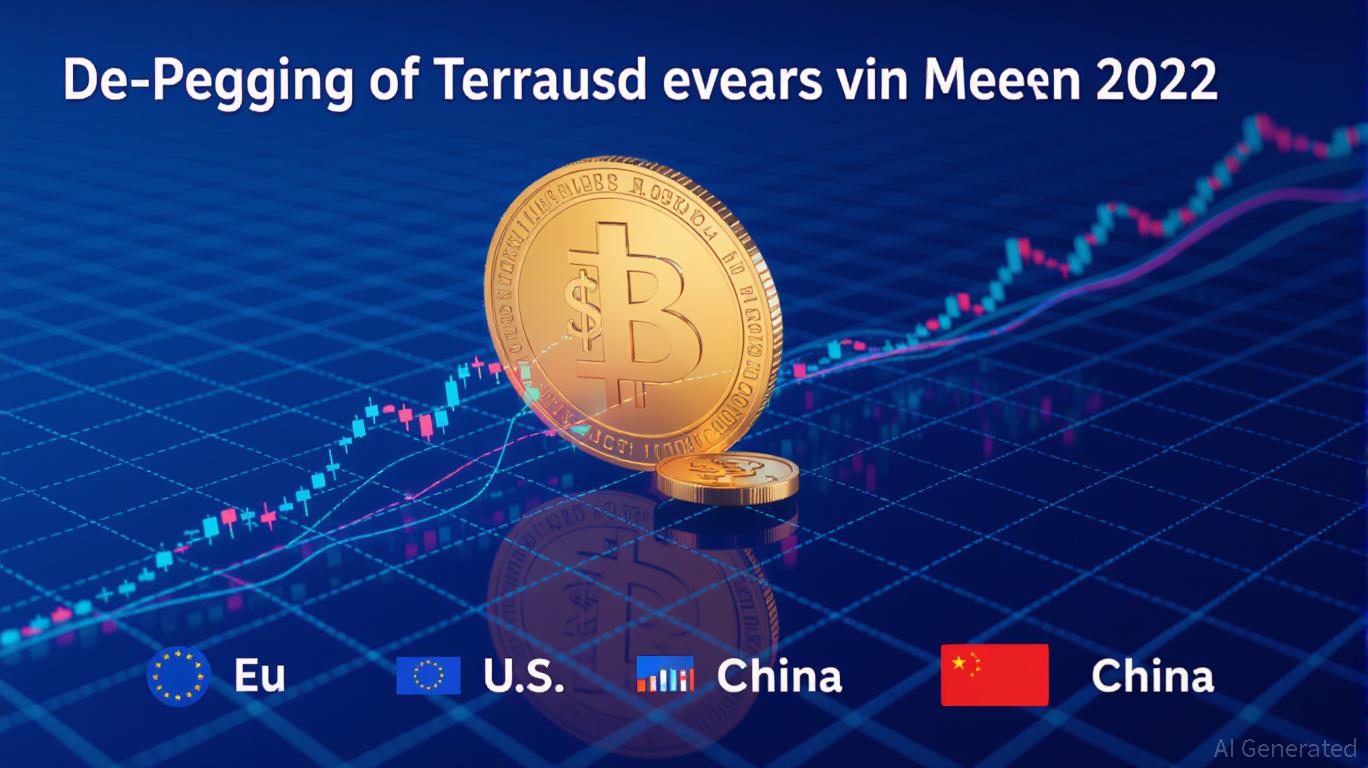DeFi Presales: The High-Growth Alternative to Stagnant Blue-Chip Crypto?
- 2025 crypto market shows stark divergence: blue-chip BTC/ETH offer stability while DeFi presales deliver explosive ROI potential. - Bitcoin hits $108k all-time high but lags Ethereum's 114.8% annual ROI, contrasting DeFi tokens' 2,400%-5,000% projected gains. - DeFi projects like Bitcoin Hyper ($HYPER) and Wall Street Pepe ($WEPE) leverage AI, cross-chain tech, and deflationary models to attract speculative capital. - High-risk DeFi presales face execution risks and regulatory uncertainty, while blue-chi
In the ever-evolving crypto landscape of 2025, a stark divergence has emerged between traditional blue-chip cryptocurrencies like Bitcoin (BTC) and Ethereum (ETH) and the explosive potential of decentralized finance (DeFi) tokens. While institutional-grade assets like Bitcoin and Ethereum have seen their growth tempered by macroeconomic headwinds and regulatory scrutiny, DeFi tokens have carved out a niche for high-risk, high-reward opportunities. This article examines the contrasting trajectories of these asset classes and evaluates their ROI potential for investors navigating the post-Ethereum era.
Blue-Chip Crypto: Stability Over Growth
Bitcoin and Ethereum, the bedrock of the crypto market, have historically offered a blend of stability and institutional adoption. However, their performance in 2025 has been marked by stagnation.
Bitcoin, often dubbed "digital gold," saw a 16% price increase in Q3 2025, outperforming Ethereum's 50% decline during the same period. By May 28, 2025, Bitcoin reached an all-time high of $108,949.61, driven by post-halving momentum and the approval of U.S. spot Bitcoin ETPs. Yet, its role as a store of value has come at the cost of innovation. With a transaction throughput of just 5–7 TPS on the base layer and limited programmability, Bitcoin's utility remains constrained to value transfer.
Ethereum, meanwhile, has struggled to maintain its dominance in the DeFi space. Despite technological upgrades like the Berlin update and the Ethereum Merge, its price in August 2025 ($4,074.5) lagged behind its December 2024 peak of $4,400. While Ethereum's ROI from December 2024 to December 2025 was a robust 114.8%, its Q3 performance highlighted volatility and a lack of consistent growth. The collapse of FTX in 2022 and ongoing regulatory uncertainty have further dampened investor sentiment.
Decentralized Finance: The High-Yield Frontier
In contrast, some DeFi projects have emerged as a haven for investors seeking explosive returns. These projects, often in early-stage development, leverage cross-chain innovation, AI integration, and deflationary tokenomics to attract speculative capital.
These projects exemplify a broader trend: DeFi solutions are increasingly prioritizing real-world utility over pure speculation. For instance, Nexchain (NEX) combines AI-driven smart contracts with a 400,000 TPS throughput, while Best Wallet Token (BEST) powers a multi-chain wallet with staking rewards of 89% APY.
The ROI Divide: Blue-Chips vs. DeFi Solutions
The ROI disparity between blue-chip crypto and DeFi tokens is stark. While Ethereum's 114.8% annual ROI and Bitcoin's 16% Q3 gain are respectable, they pale in comparison to the multi-thousand percent projections of some DeFi tokens. For example:
- MAGACOIN Finance (MAGA): A hybrid DeFi 2.0 model with a 25,000% ROI target by 2026.
- Lyno AI ($LYNO): AI-driven incentives and structured burns have driven a 205% APY for stakers.
However, this high-growth potential comes with significant risks. DeFi projects are often unproven, with execution risks, regulatory ambiguity, and market volatility posing threats. In contrast, Bitcoin and Ethereum benefit from institutional backing, mature ecosystems, and established use cases.
Strategic Investment Considerations
For investors, the choice between blue-chip crypto and DeFi solutions hinges on risk tolerance and time horizon. Conservative investors may prefer Bitcoin and Ethereum for their stability and macroeconomic resilience. Bitcoin's role as a hedge against inflation and Ethereum's institutional-grade DeFi infrastructure offer long-term value.
Speculative investors, however, should allocate a portion of their portfolio to high-conviction DeFi opportunities. Key criteria for selection include:
- Utility-Driven Tokenomics: Projects with real-world applications (e.g., cross-chain bridges, AI integration).
- Institutional Validation: Whale inflows and audit credibility (e.g., CertiK, HashEx).
- Market Timing: Early-stage projects with clear roadmaps and liquidity events.
Conclusion: Balancing Stability and Speculation
The 2025 crypto market is bifurcated: blue-chip assets provide stability and institutional alignment, while DeFi projects offer explosive growth potential. Investors must weigh these options carefully, diversifying their portfolios to capture both macroeconomic trends and innovation-driven opportunities. As the post-Ethereum era unfolds, a strategic blend of blue-chip holdings and high-conviction DeFi opportunities may prove optimal for navigating the volatile yet rewarding crypto landscape.
Disclaimer: The content of this article solely reflects the author's opinion and does not represent the platform in any capacity. This article is not intended to serve as a reference for making investment decisions.
You may also like
Top 4 Bullish Cryptocurrencies in 2025: ETH, XRP, HYPE, and BlockDAG
- 2025 crypto market prioritizes projects with strong tech, utility, and institutional backing, led by ETH, XRP, HYPE, and BlockDAG. - Ethereum's Pectra upgrade boosted scalability, attracting $145B in RWA tokenization and 5% ETF absorption via improved Layer-2 solutions. - XRP gained $1.2B ETF inflows post-regulatory clarity, while Hyperliquid's $43–$44 price range reflects demand for fast, low-cost DeFi trading. - BlockDAG's 15,000 TPS hybrid PoW-DAG architecture and $383M presale position it as a scalab

Shiba Inu's $0.000020 Breakout: Speculative Hype or Strategic Inflection Point?
- Shiba Inu (SHIB) hovers near $0.000020 amid debates over whether its price surge reflects speculative hype or genuine ecosystem-driven value. - Shibarium's 1.5B+ transactions and 30% gas fee cuts correlate with SHIB's resilience, suggesting utility-driven demand despite 39% volume declines. - Deflationary burns reduced supply by 41% in 2025, but macroeconomic factors and whale activity remain key volatility drivers for the token. - Ecosystem expansion into AI, gaming, and metaverse projects aims to trans

The New Gold Rush: Capital Efficiency and Presale Dynamics in Q4 2025 DeFi
- Q4 2025 DeFi balances institutional stability with speculative presales, driven by capital efficiency metrics reshaping asset allocation. - Core-satellite strategies allocate 60-70% to ETH/AAVE (36.4%-72% gains) and 20-30% to high-yield presales like Remittix ($HYPER) offering 205% APY. - Bitcoin DeFi TVL hits $5-6B BTC via layer-2 solutions, while omnichain platforms and AI tools redefine liquidity and institutional adoption. - High-risk presales (e.g., MAGACOIN FINANCE's $12.8M raise) highlight innovat

Stablecoin Systemic Risks and Regulatory Gaps: Implications for Global Investors
- Stablecoins face structural fragility and regulatory divergence, risking systemic collapse amid fragmented global oversight. - Algorithmic models like UST and USDC exposed liquidity mismatches, with algorithmic failures causing $200B+ losses in hours. - EU's MiCA enforces reserve transparency while U.S. GENIUS Act lacks consumer protections, creating uneven investor risk landscapes. - China's state-controlled stablecoins and global DeFi adoption highlight growing systemic risks, including 63% crypto crim
